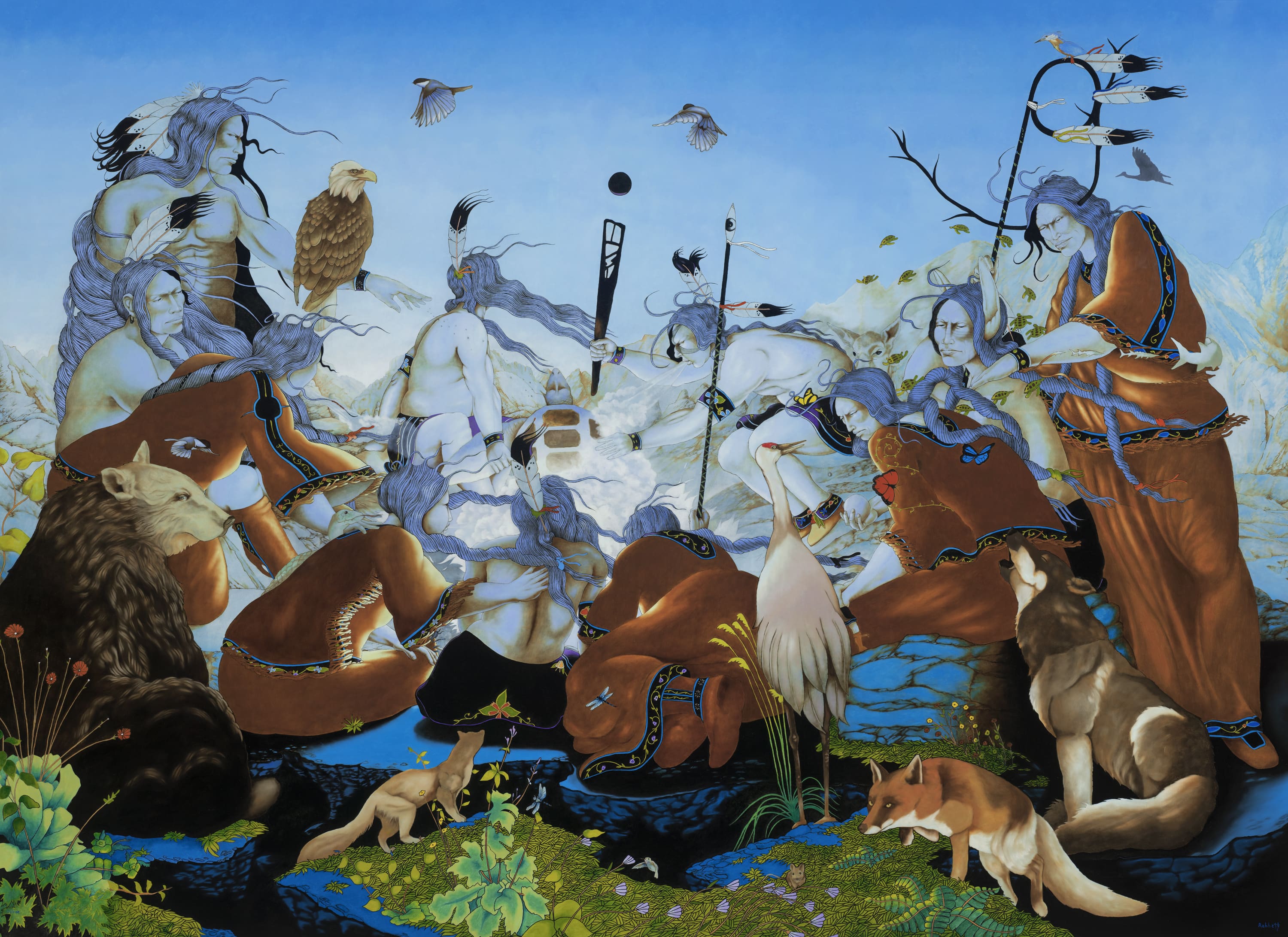Rabbett Before Horses Strickland is the Keith Richards of oil painting. At least that’s what the 70-year-old artist tells me with a laugh, which feels pretty spot-on given his rock-and-roll persona. His career spans 57 years, despite a lack of formal training or active self-promotion. He’s almost entirely cut off from technology. He typically paints larger-than-life eight-by-12-foot canvases that can be intimidating, even for avid collectors. He gets bored of his own paintings and shifts his focus to theoretical mathematics or jazz composition, just to keep things interesting. “I like concepts that are simply stated but hard to solve,” he explains.

Photography by Wolfskull Creative
Strickland paints every day in his secluded trailer just outside Bayfield, Wisconsin. He works only during the day, when natural light pours in so he gets the most accurate coloration of the paints he mixes himself. Vibrant hues of gold, fuchsia and indigo give life to the ancient Ojibwe narrative of Nanabozho, a cultural hero who takes the form of half rabbit, half man and is in all of Strickland’s paintings. The mythical character lives outside of time and place, outside of cultural precedent. He embodies all the potential of human and demigod because he sees all. Sometimes Nanabozho is a subtle stroke in a broadly painted landscape. But more often, he is front and center, like in Strickland’s most recent work, where the figure lures geese into a closed-eye dance so he can kill and eat them.
While Nanabozho’s being is complex, it’s the stories and embellishments that Strickland most enjoys. But he doesn’t simply translate Ojibwe tales to large-scale canvas. “Rabbett identifies with this character and reinterprets the stories as if they were history,” explains Ken Bloom, former director of the University of Minnesota Duluth’s Tweed Museum of Art, where Strickland’s work is on display. “Then he relates it from the standpoint of his own individual politics, perceptions and sense of spirituality.”

“Iskwaaj Nibi (The Last Waterhole: Creating a New World)”
The intricate nature of Strickland’s work was encouraged at an early age as he grew up surrounded by artists. “My mother, aunts and uncles were all painters,” he explains. But while they focused on landscapes and portraits, he began painting images from Greek mythology. His compositions today still reflect Baroque and Renaissance influences but skew wildly contemporary in content.
“Rabbett is not a trained painter, so he doesn’t paint in a classical Western way,” notes Bloom. “He has a capacity to represent his imagination in real forms. It’s an extraordinary talent; it’s the wish of every artist.”


